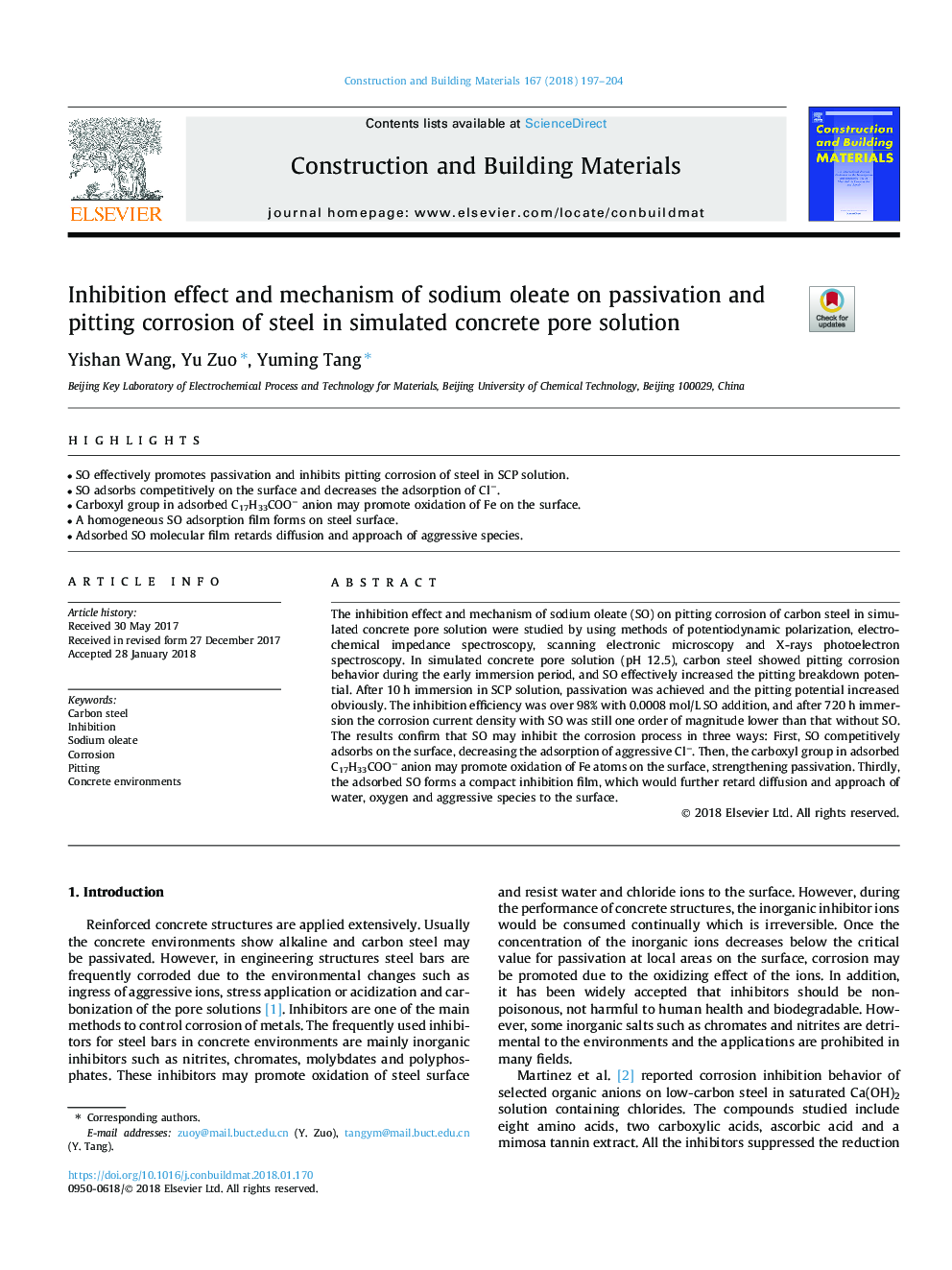| Article ID | Journal | Published Year | Pages | File Type |
|---|---|---|---|---|
| 6714985 | Construction and Building Materials | 2018 | 8 Pages |
Abstract
The inhibition effect and mechanism of sodium oleate (SO) on pitting corrosion of carbon steel in simulated concrete pore solution were studied by using methods of potentiodynamic polarization, electrochemical impedance spectroscopy, scanning electronic microscopy and X-rays photoelectron spectroscopy. In simulated concrete pore solution (pH 12.5), carbon steel showed pitting corrosion behavior during the early immersion period, and SO effectively increased the pitting breakdown potential. After 10â¯h immersion in SCP solution, passivation was achieved and the pitting potential increased obviously. The inhibition efficiency was over 98% with 0.0008â¯mol/L SO addition, and after 720â¯h immersion the corrosion current density with SO was still one order of magnitude lower than that without SO. The results confirm that SO may inhibit the corrosion process in three ways: First, SO competitively adsorbs on the surface, decreasing the adsorption of aggressive Clâ. Then, the carboxyl group in adsorbed C17H33COOâ anion may promote oxidation of Fe atoms on the surface, strengthening passivation. Thirdly, the adsorbed SO forms a compact inhibition film, which would further retard diffusion and approach of water, oxygen and aggressive species to the surface.
Related Topics
Physical Sciences and Engineering
Engineering
Civil and Structural Engineering
Authors
Yishan Wang, Yu Zuo, Yuming Tang,
